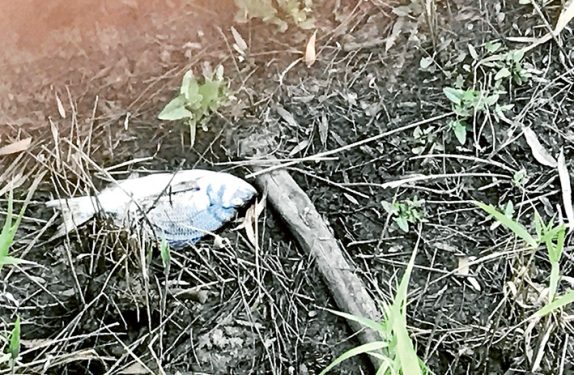
“Most of the fish carcasses, 30-40cm adult black bream, are on the creek margins to the west of the Balnarring Beach road bridge,” Barry Greer, of Balnarring, said.
“I have contacted Melbourne Water and the Balnarring Foreshore Committee but both entities insist that it’s a natural event and there’s no cause for concern.
“I have spent much time around the creek and have never seen this number of dead fish in the creek or estuary before. The strange part is that only these large bream seem to be affected.”
Mr Greer said he saw 13 dead fish from the bridge on Wednesday and 12 on the Tuesday.
“They were not the same fish,” he said. “Foxes would take any leftover dead ones. It’s an ongoing thing.”
Mr Greer said the creek had been allowed to fill with sediment. “The water’s only a foot deep in some places and they say they won’t dredge because that would disturb nitrates and heavy metals.”
Melbourne Water Waterways and land manager south east John Woodland blamed natural phenomena for the deaths. “Unfortunately, large numbers of fish die from time to time in our creeks due to natural causes, such as low oxygen levels, particularly during the summer months,” he said.
“This can happen in most waterways this time of year and does not necessarily reflect the health of the waterway.”
Mr Greer predicted Melbourne Water’s response: “They’ll say it is a natural occurrence but really it’s as a result of a disrupted environment, with much building work causing mud to flow down the drains. I don’t think they are taking it seriously.”
The EPA says it is investigating reports of fish dying in Merricks Creek.
The Melbourne Water-sponsored Merricks Creek Estuary Investigation and Options Analysis Report, published in October last year, advises against trying to prevent sea grass entering the estuary; trying to clear it from the estuary, or from clearing it from Balnarring Beach, saying it is natural and clearing could endanger some species, such as the hooded plover.
The report, by Alluvium Consulting Australia Pty Ltd, explored the processes creating the “rotten egg gas” odour, fish kills and shallowing of the estuary.
It concluded fish deaths were likely caused by a decline in dissolved oxygen in the water. This can be caused by either algal blooms or through a process in which hydrogen sulphide released into the water through decomposition of the sea grass is oxidised by the dissolved oxygen.
Reports of large numbers of fish, crustaceans or eels that appear to be dead or struggling can be made to the EPA on 1300 372 842.